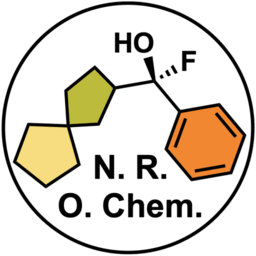Shi Epoxidation
The Shi asymmetric epoxidation allows the synthesis of epoxides from alkenes using a fructose-derived organocatalyst with Oxone.
Reaction Mechanism
1. Oxidation of the catalyst with Oxone to generate the active epoxidation reagent. 2. The resulting sulfate intermediate is a good leaving group that facilitates the ring closure to the corresponding dioxirane intermediate. 3. The dioxirane derivative induces then the asymmetric epoxidation of the alkene, while regenerating the ketone for the next catalytic cycle.
Experimental Procedure
The (–)-Shi ketone (1.0 eq), a 50 mM sodium tetraborate decahydrate and a 400 μM EDTA–Na2 solution in water, and tetrabutylammonium hydrogensulfate (0.2 eq) were added in sequence to a solution of the unsaturated ketone (47.6 mmol, 1.0 eq) in acetonitrile– dimethoxymethane at 23 °C. The reaction mixture was then cooled to 0 °C. A solution of oxone (2.0 eq) and EDTA–Na2 in water and aqueous potassium carbonate (8.0 eq) were then added dropwise simultaneously using two addition funnels over 1 h. Upon completion of the addition, the reaction mixture was stirred for 1 h at 0 °C. The product mixture was warmed to 23 °C over 1 h. The warmed product mixture was diluted sequentially with water and ethyl acetate. The layers that formed were separated, and the aqueous layer was extracted with ethyl acetate. The organic layers were combined and washed with saturated aqueous sodium chloride solution, dried over sodium sulfate, filtered, and concentrated. The residue obtained was purified by flash-column chromatography to provide the desired epoxide (70% yield).
Learn More Named Reactions
[instagram-feed feed=2]






